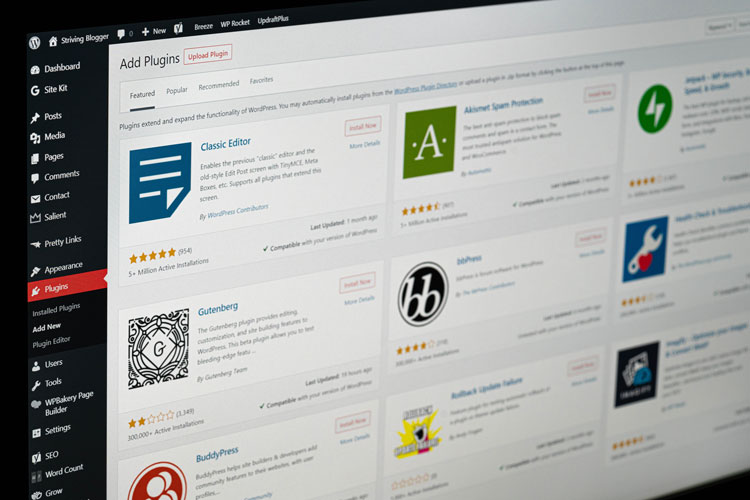Let’s go through some of the best methods of accepting payments on WordPress and share some advice on how you can get started accepting payments today.
How to Accept Payments on WordPress


Let’s go through some of the best methods of accepting payments on WordPress and share some advice on how you can get started accepting payments today.

As business owners step away from in-store purchases and focus primarily on online options during the pandemic, it’s important to review the implications of remote payment fraud. Especially for businesses that don’t primarily function as an eCommerce enterprise, remote payment options can appear intimidating. As online alternatives continue to keep businesses afloat, protecting your operations from fraud is a must. Here’s how you can get started.
A hosted payment page removes the security provided by a physical credit card, ID, and being able to interface with a customer in person. Thus, some remote credit card terminals will charge higher rates on transactions that require additional information regarding a customer’s billing address, zip code, and contact information.
These additional requests manifest as AVS prompts and can result in fraud if they are dismissed. Responding to AVS prompts can take time away from your hands but can help reduce the risks of fraud and keep your rates low.
New prospects are what make a business flourish but if you aren’t well-versed in accepting remote payments, can also lead to potential fraud. This is particularly true when it comes to accepting subscriptions, as customers sometimes receive products before their credit card is charged.
Incorporating an anti-fraud system takes time, so prioritizing known and trustworthy customers, meanwhile, can protect your business from losing money. Nowadays, lifelong customers tend to patronize their favorite businesses on a regular basis, which you can easily take advantage of while you consider your options.
While it may seem counterintuitive, trusting your instincts when it comes to evaluating a sale that seems too good to be true can keep fraudulent transactions at bay. Perhaps you’ve come across a customer whose billing and shipping addresses don’t match or whose credit card information simply won’t go through. If so, you may be better off foregoing the sale or even choosing to temporarily suspend international or out-of-state orders.
Not only does a robust security system protect your customers’ data—but it also protects your business. By adhering to PCI security standards and assessing any third-party provider’s cybersecurity risk, you can build an impenetrable payment system that allows clients to trust you and you to trust your clients. When outsourcing a payment processor, review their disaster recovery strategy and consider whether their protocols align with yours.
No business owner wants to lose a sale but while some of these practices may seem unnecessary or over-the-top, they’re also useful in preventing scams and chargebacks. Over time, you may choose to relax some of these measures but should prioritize AVS for over-the-phone transactions.
With Payments Page, you can incorporate branded elements into your payment portals such as unique payment buttons and a stunning design that reflects your business. Better yet, you can ensure that your transactions are fully protected and that your payment gateway displays comprehensive business information to clients. Ready to accept payments? Sign up today with a 30% discount!

Online businesses benefit from having recurring revenue. This business model centers on a product or service that people purchase regularly. An example of this is subscription-based services that customers pay for on a monthly, semi-annually, or annual basis.
Recurring payments allow a business to compute more accurately the return on their investments, and it helps reduce the time they spend on related tasks like marketing to new audiences. Here are some things you can expect if you adopt this model for your business.
It is easier to sell to existing customers than finding new people to opt into your service or product. People who are already making monthly payments are likely to keep paying. Furthermore, if you have a recurring revenue business, you do not need to trade your time directly for money. You can grow your business faster since you have a cushion for your efforts.
Recurring revenue lets you increase the lifetime value for your customers. If they pay for something regularly, it is an incentive for you to keep improving your product and adding bonuses that they would find engaging. It means more purchases, which leads to a higher ROI on the money you spend. When you increase your number of subscriptions, you can focus on customer acquisition and retention and make a bigger impact.
Companies built around one-time purchases have to market and promote their products every month. With recurring payments, you can keep selling to the same group of people and not worry as much about being unable to meet your sales goals. This business model also allows you to optimize your business and make it more suitable for recurring revenue. You can start by looking out for these three things.
Do you want more revenue, more customers, or to reach another goal? Identify your goals at the start to lock in the best pricing scheme for your product. If you are tying your revenue to a pricing strategy, you need to be strategic—you cannot change your fee schedules on a whim, or you will alienate customers. Being able to justify your pricing model will help you find the best price points, differentiate the tiers, and bring in appropriate bonuses or add-ons.
Your business relies on how happy your customers are about your products. When people sign up for subscriptions, they need to have as great an experience as possible. If you focus on their journey, you will surely see an improvement in your acquisition numbers. Furthermore, a great onboarding process will lead to people being more willing to pay for your products.
There are plenty of complex processes involved in billing, and you have to know what these are for you to succeed in implementing this business model. One way to make things easy for you is by teaming up with a hosted payment page provider, or a company that creates plugins for websites. This way, you can build on structures that other companies use, taking one thing out of your to-do list.
This is the best time to start a recurring revenue business. Membership websites and SaaS providers are all over the internet—people are used to the idea of paying a monthly fee. What you need to do is concentrate on delivering a product or service that they love.
Make the collection of recurring payments a breeze by using our services at Payment Page. After you create a hosted payment page with us, you can concentrate on giving customers the best product or service! Get in touch with us today for more details.

If you’re a fan of Internet streaming, you’re most likely already subscribed to Netflix or Spotify. As subscription-based services grow in popularity, more businesses incorporate recurring billing models to sustain growth, achieve higher revenues, and customer lifetime values (CLVs). If your company hasn’t yet considered the upsides of subscriptions, here are the top advantages of subscription-based pricing.
The pay-once, use-forever model is no longer as lucrative as it once was. Ask any customer, and they’d likely rather pay $25 monthly than $500 upfront for the same product. Higher prices are psychological barriers to entry for your products.
While consumers might pay a more considerable amount in the long run, they get immediate access to your services without worrying about the next payment for 30 days. Lower price points also benefit businesses in that they can fly under budget threshold radars, increasing the growth of monthly recurring revenue (MRR).
With a pay-once model, a poorly performing month can set you back tremendously, forcing you to recover investments by hunting for new customers. On the other hand, subscription-based business models allow decision-makers to predict monthly revenues more accurately.
Foreseeable earnings ensure that you aren’t ordering more inventory than you need at any given time. Plus, billing automation can bridge gaps between billing cycles.
Depending on your marketing strategy and conversion route, customer acquisition costs (CAC) will remain mostly similar to one-time payment schemes. However, CLV rises by reducing churn rates through positive ongoing client relationships.
Instead of actively seeking new clients beyond what your resources can handle, you can leverage mounting assets for retention and customer management.
Having continuous contact with your client base opens up opportunities to market additional and complimentary services. Because customers have already engaged in a prior relationship with your business, they are more likely to be receptive to value-adding products. Allow customers to upgrade seamlessly through tiered or volume pricing.
One-time payment systems make it challenging to offer trial periods or taster sessions. By adopting subscription-based methods, you can more effectively provide free versions of your product in the hopes of an upgrade to the full package.
Even when a customer doesn’t sign up immediately after expiration, you’ll already have their contact information in your—virtual—back pocket. You can convince them to sign up later.
Because your subscription product is always up-to-date, you reduce time-to-value for updates and new features—even during the trial period.
For consumers on a budget, recurring payments are a godsend. Subscription pricing allows businesses to offer greater-value products that improve over time, emphasizing nurturing longer customer relationships. An apparent win-win circumstance for both business and consumer, scaling your business on a subscription-based model, can happen as quickly as you’d anticipate.
To begin accepting subscription payments, link up with our team at Payment Page! Upon launch, you can equip your beautifully designed payment portal with attractive payment buttons for subscriptions your clients can’t wait to get their hands on!

One of the biggest factors to consider when running a business is how you’re going to receive payments for any products or services rendered. Without a proper method for receiving payments from your consumers, your business won’t be able to operate as efficiently and as safely as it could.
The best and most secure method of payment is arguably through the use of credit cards. Not only are they safe to use, but they’re also incredibly convenient for making purchases online or through e-commerce platforms. For users, it provides a way to shop without carrying cash—allowing for safer travels and hassle-free payments.
Setting up a method for your business to accept credit card payments is quite easy. All you’ll need is to partner with a platform that can handle such a transaction. There are currently three approaches to this: merchant accounts, payment service providers, and e-commerce platforms.
Merchant accounts are one of the most basic and traditional approaches when it comes to the credit card payment process, and generally for brick and mortar stores that accept in-person “swiped” transactions only. This involves creating an account with a merchant acquiring bank that will serve as an intermediary with a credit card company, giving a measure of stability and security for both merchant and credit card providers.
Once you’ve selected a credit card company to work with, you’ll have to search for a merchant acquiring bank to approve your new account. They require you to submit certain documents, among which are your business activities, banking information, tax returns, and payment model.
E-commerce platforms, on the other hand, are for online businesses that plan to sell mainly through the internet or accept payments through their website or a marketplace. There are multiple approaches to this, but the gist is to either create an e-commerce platform in itself, to implement an e-commerce capability into an already existing website, or to sign up for a marketplace like Amazon.
Before setting this up with a third party, you’ll need to provide your employee identification number (EIN) and banking information—so make sure to have those ready before taking this step.
If you create your own ecommerce platform, you’ll still need to have your own Payment Service Provider or Payment Gateway.
Meanwhile, payment service providers, also known as Payment Gateways, are available for many online and physical stores. This is probably the quickest way of accepting credit card transactions without having to create a merchant account. Some of the more popular payment gateways are PayPal, Square, and Stripe.
Setting up an account is incredibly easy and free, and often utilize a month-to-month flat-rate fee for their service or a percentage based fee for each transaction.
It is incredibly important to choose the right provider to keep your business on the right track. Remember that there are two major considerations to think of when choosing a method to accept credit card payments: the overall cost and the specific needs of your business.
The overall expenses change over time—while payment service providers charge a flat-rate either per month or per transaction, it is assuredly more costly in the long run than a merchant account. On the other hand, it’s highly flexible to help you accept online payments with ease, including subscriptions, which can unlock a sustainable revenue stream for your business.
It is important to consider the time it takes to set up the various payment methods, as some are much quicker to process and create than others.
Setting up a method to accept credit card payments is essential to make your business more accessible to a variety of customers. Always remember to take careful consideration when choosing the right payment service provider or payment gateway for your business, or you could end up using the wrong provider for your needs.
If you’re looking to accept credit card payments with a simple and beautiful form on your website, then Payment Page is for you. You can easily build a custom payment form to help your business achieve real results, and integrate any of the payment gateways mentioned above.